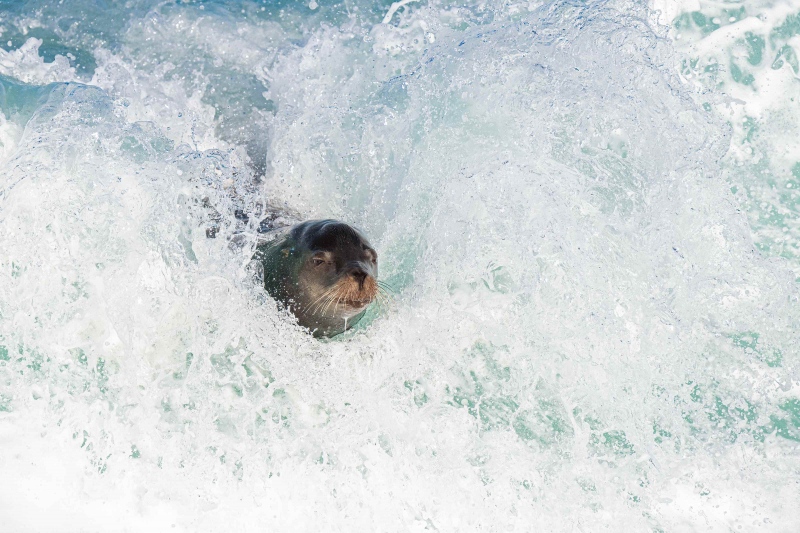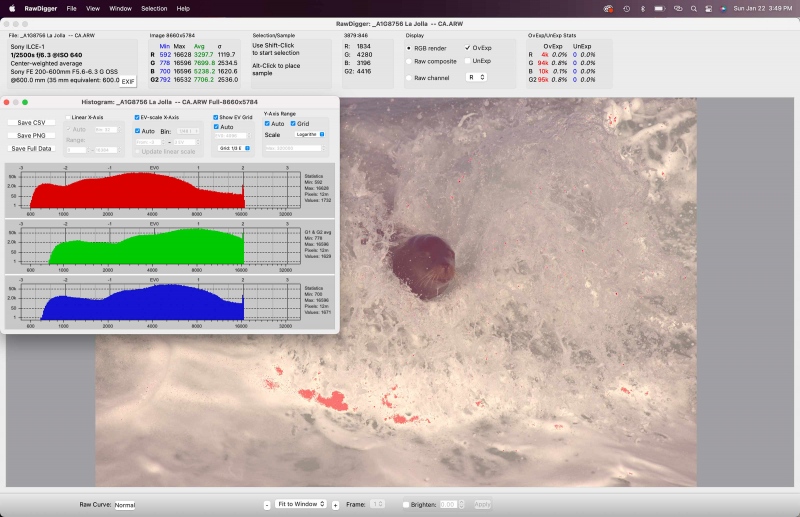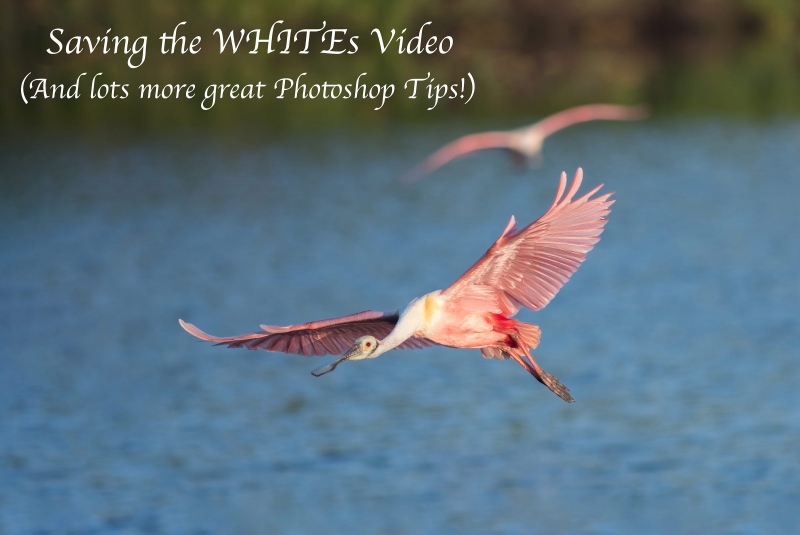What’s Up?
Morning four of the 3rd San Diego was another excellent session with lots of Royal Terns and Brown Pelican in flight, several Black Oystercatchers, and dozens of surfing sea lions. And a Brandt’s Cormorant nest with two ugly reptilian-looking chicks. Last night we enjoyed a wonderful thank you dinner at Shiku Sushi in La Jolla. Today is my last morning with the group.
Today is Monday 23 January. The photography has been so good that I wish I could stay longer. This blog post took about 90 minutes to prepare (including the time spent on the image optimization) and makes three hundred days in a row with a new, educational post. Wherever you are and whatever you are doing, I hope that you too have a great day.
I fly back to Florida tomorrow. Please remember to use my B&H or Bedford’s affiliate programs for all your new gear purchases.
There are just two spots left on the 2023 Spoonbill Boat 1-1/2 DAY MINI-IPT. See yesterday’s blog post for details.
The plan is to continue to post every day until the streak reaches one year and one day and then go back to posting every other day.
Please remember to use the B&H and Amazon links that are found on most blog pages and to use the BIRDSASART discount code at checkout when purchasing your new gear from Bedfords to get 3% back on your credit card and enjoy free second-day air FedEx. Please, also, consider joining a BAA IPT. You will be amazed at how much you will learn!
You can find some great photo accessories (and necessities, like surf booties!) on Amazon by clicking on the Stuff tab on the orange/yellow menu bar above. On a related note, it would be extremely helpful if blog-folks who, like me, spend too much money on Amazon, would get in the habit of clicking on the Amazon logo link on the right side of each blog post when they shop online. As you might expect, doing so will not cost you a single penny, but would be appreciated tremendously by yours truly. And doing so, works seamlessly with your Amazon Prime account.
Please remember that if an item — a Delkin flash card, or a tripod head — for example, that is available from B&H and/or Bedfords, is also available in the BAA Online Store, it would be great, and greatly appreciated, if you would opt to purchase from us. We will match any price. Please remember also to use my B&H affiliate links or to earn 3% cash back at Bedfords by using the BIRDSASART discount code at checkout for your major gear purchases. Doing either often earns you free guides and/or discounts. And always earns my great appreciation.
Induro GIT 304L Tripod
Out of production for more than two years, BAA just sold its last one. The good news? We have located two more new-in-the-box tripods. They will be available for shipping at the end of January. Best to order yours now to be sure that you get one. We will not run your card until your item ships. The 304L was my go-to tripod for more than a decade. Best to grab order yours right now to avoid being disappointed.
|
|
|
This image was created on 22 January 2023, the fourth morning of the 3rd San Diego IPT at La Jolla, CA. While standing at full height I used the handheld Sony FE 200-600mm f/5.6-6.3 G OSS lens (at 600mm) and The One, the Sony Alpha 1 Mirrorless digital camera. ) The exposure was determined using Zebra technology with ISO on the Thumb Dial. ISO 640. 1/2500 second at f/6.3 (wide-open) in Manual Mode. AWB at 9:26:35am on a sunny morning. RawDigger showed the exposure to be dead-solid perfect. Tracking: Expand Spot AF-C with Bird Face/Eye Detection performed perfectly. Be sure to click on the image to enjoy a high-res version. California Sea Lion surfing
|
Cheating a Bit
I tried and failed several hundred times to create a great image of one of the California Sea Lions rocketing out of a wave on riding a big wave into shore on the crest. There were lots Heermann’s and Western Gulls feeding in the wash of the broken waves so I began photographing them with the handheld 200-600mm G lens. Then I noticed several sea lions swimming in the froth of already broken waves. When I acquired focus on the sea lion in today’s featured image, a small wave broke and he rode it toward shore in relatively peaceful fashion. I was lucky. And getting the perfect exposure for a very dark and very wet pinniped in the froth of a broken wave on a sunny day is quite a challenge.
Rather than calling this cheating, let’s say that I took advantage of a chance situation that was — except for the exposure, a lot less challenging than the usual surfing sea lion image. I am still working on the latter.
Note: this was, by a small margin, the best of a six-frame sequence, all sharp on the eyes and face of the sea lion.
|
|
The RawDigger screen capture for the California Sea Lion surfing image |
The Very Difficult Exposure Challenge
As noted above, getting the perfect exposure for a very dark and very wet pinniped in the froth of a broken wave on a sunny day is quite a challenge. You want to expose as far to the right as possible to maximize detail in the dark fur of the subject without totally blowing out (over-exposing) the bright white froth of the breaking wave. As you can see in the screen capture above, I nailed it. With only 203,000 OvExp pixels out of 51,000,000, recovering the small areas of over-exposed surf during the conversion was a simple chore. That today’s featured image was a fairly large crop speaks of the incredible image quality of sharp Sone a1 .ARW res files. Be sure to click on the image to see the fabulous job that I did of restoring detail in the dark fur and taking out the BLUE cast on the top of the animal’s head.
Ho Hum, Another Perfect Exposure
What can I say? The combination of Zebras live in the viewfinder (with your camera set up properly) and post-capture study of the raw files in RawDigger makes it pretty much child’s play to come up with perfect exposure after perfect exposure. It would be impossible to overstate how much I have learned by studying RawDigger and how much better my exposures have become since I started with the program almost two years ago. The raw file brightness for today’s Image #1, with the all three channels just creeping pst the 16000 line, is exactly what I wanted and needed to maximize the detail in the dark fur.
RawDigger — not for the faint of heart …
Nothing has ever helped me learn to create perfect exposures to the degree that RawDigger has. I think that many folks are reluctant to learn that most of their images are underexposed by one or more full stops and that highlight warnings in Photoshop, Lightroom, Capture One, and your in-camera histogram are bogus as they are based on the embedded JPEGs. Only your raw files tell the truth all the time. Heck, I resisted RawDigger for several years … Once you get over that feeling, RawDigger can become your very best exposure friend no matter what system you are using. On the recent IPTs and In-the-Field sessions, we have demonstrated that fact. Convincingly.
The RawDigger Adapted (pink) Histogram
In the RawDigger e-Guide, you will learn exactly how to set up the Adapted “pink” RawDigger Histogram and how to use it to quickly and easily evaluate the exposure or raw file brightness of images from all digital cameras currently in use. RawDigger was especially helpful to me as I have struggled with R5 exposures and learned my new camera body, the Sony Alpha a1.
|
|
RawDigger e-Guide with Two Videos |
The RawDigger e-Guide with Two Videos
by Arthur Morris with Patrick Sparkman
The RawDigger e-Guide was created only for serious photographers who wish to get the absolute most out of their raw files.
Patrick and I began work on the guide in July 2020. At first, we struggled. We asked questions. We learned about Max-G values. We puzzled as to why the Max G values for different cameras were different. IPT veteran Bart Deamer asked lots of questions that we could not answer. We got help from RawDigger creator Iliah Borg. We learned. In December, Patrick came up with an Adapted Histogram that allows us to evaluate the exposures and raw file brightness for all images created with all digital camera bodies from the last two decades. What we learned each time prompted three complete beginning to end re-writes.
The point of the guide is to teach you to truly expose to the mega-Expose-to-the-Right so that you will minimize noise, maximize image quality, best utilize your camera’s dynamic range, and attain the highest possible level of shadow detail in your RAW files in every situation. In addition, your properly exposed RAW files will contain more tonal information and feature the smoothest possible transitions between tones. And your optimized images will feature rich, accurate color.
We teach you why the GREEN channel is almost always the first to over-expose. We save you money by advising you which version of RawDigger you need. We teach you how to interpret the Max G values for your Canon, Nikon, and SONY camera bodies. It is very likely that the Shock-your-World section will shock you. And lastly — thanks to the technical and practical brilliance of Patrick Sparkman — we teach you a simple way to evaluate your exposures and the raw file brightness quickly and easily the Adapted RawDigger histogram.
The flower video takes you through a session where artie edits a folder of images in Capture One while checking the exposures and Max-G values in RawDigger. The Adapted Histogram video examines a series of recent images with the pink histograms and covers lots of fine points including and especially how to deal with specular highlights. The directions for setting up the Adapted Histogram are in the text.
If we priced this guide based on how much effort we put into it, it would sell it for $999.00. But as this guide will be purchased only by a limited number of serious photographers, we have priced it at $51.00. You can order yours here in the BAA Online Store.
|
|
The Saving the WHITEs (and lots more!) Video image |
The Saving the Whites (and lots more!) Video
My two biggest challenges when optimizing images are getting the BLUEs just right, and restoring detail to the WHITEs and highlights of properly exposed raw files. There are four things that I do to accomplish the latter. All are covered in detail in this 21+ minute video, along with a dirty trick to try if the first four do not work perfectly. Sit with me at my laptop as I teach you how to save the WHITEs. I begin with the raw conversions of two different raw files, today’s featured Snowy Owl image, and Joe Usewicz’s spoonbill image that was featured in the Extraordinary Over-Exposed (?) Spoonbill/Saving the WHITEs Optimization blog post here.
In addition to learning how to save the WHITEs (in both images), you will learn how to expand canvas using the amazingly convenient Content-Aware Crop Tool, to set the White Balance (color temperature), to set the WHITE and BLACK points, see Digital Eye Doctor and RawDigger in action, learn to make a Color Range Selection, and lots more. Near the end of the video, I share an innovative technique for fixing an error made early on in the image optimization process (without having to start from scratch!)
To purchase your copy of the Saving the Whites Video (and lots more!) video, you can send a PayPal for $37.00 to us at birdsasart@verizon.net, call Jim in the office at 863-692-0906 with your credit card in hand, or visit the item in the BAA Online store by clicking here.
Typos
With all blog posts, feel free to e-mail or to leave a comment regarding any typos or errors.


















HaHaHa!! That California Sea Lion surfing is cute and funny! Very well made!!
A truly nice good action shot! Love it! Congrats!